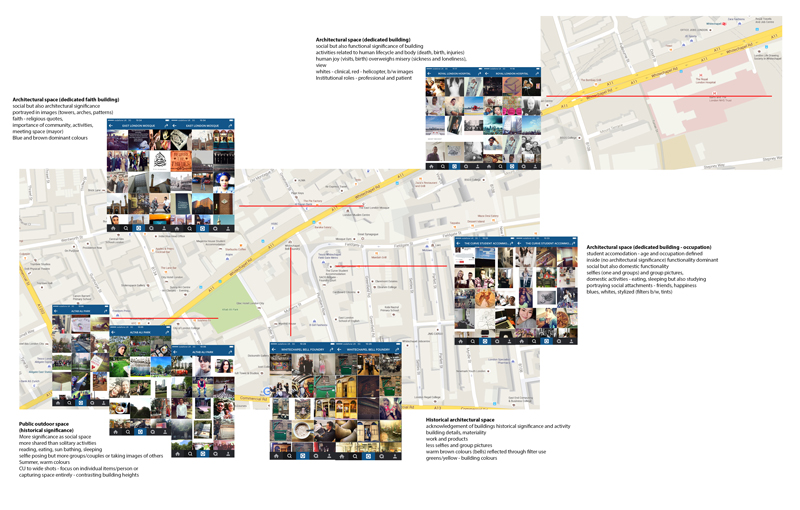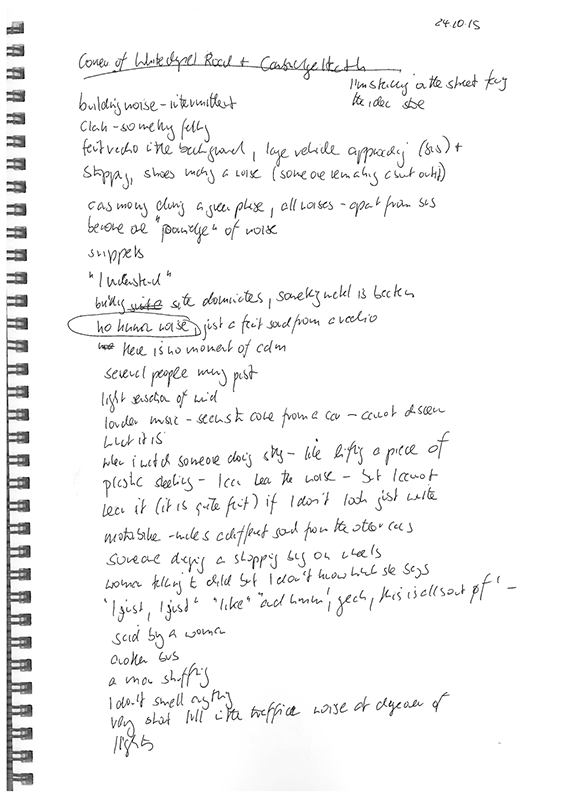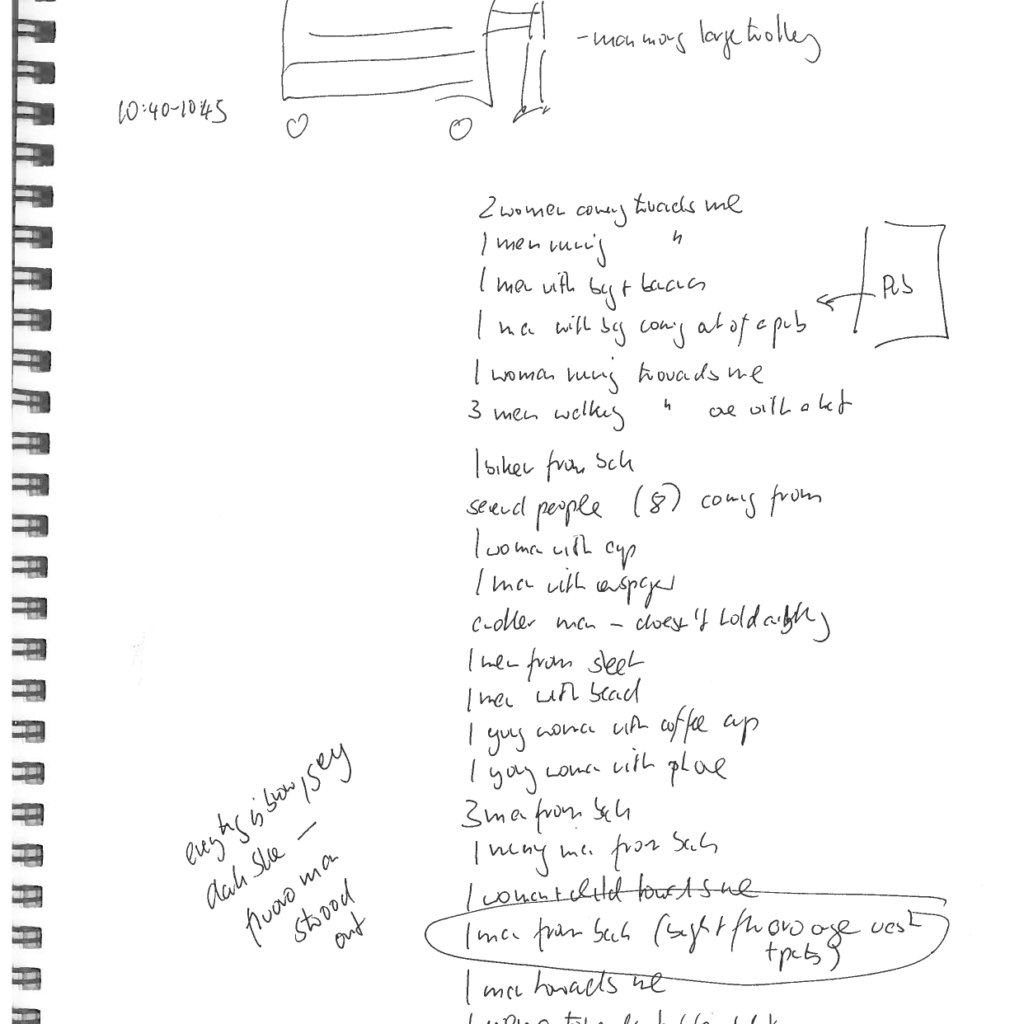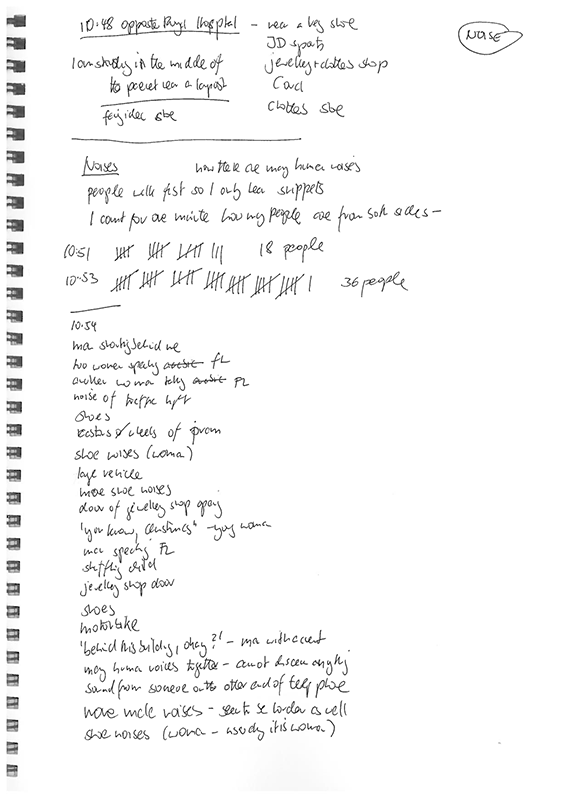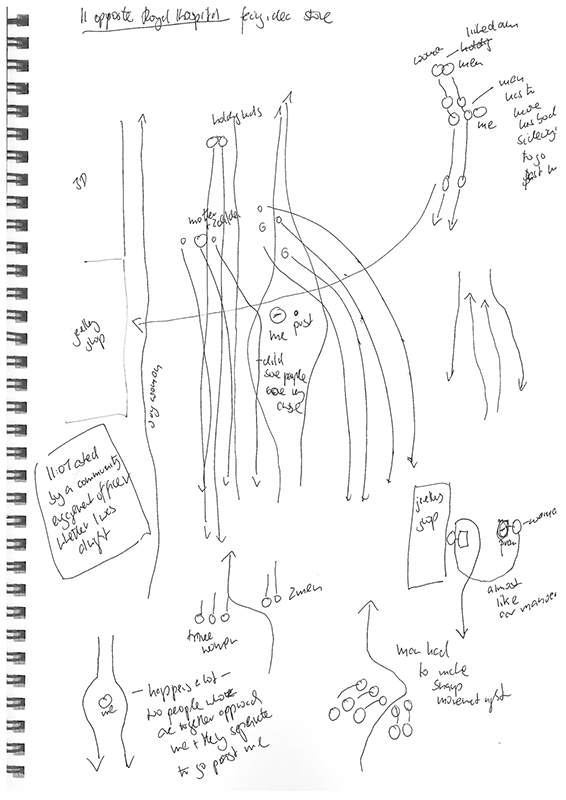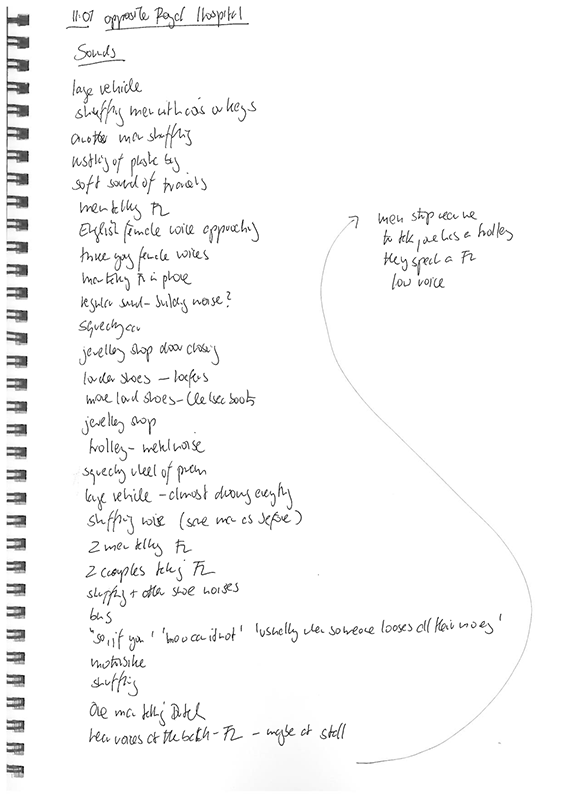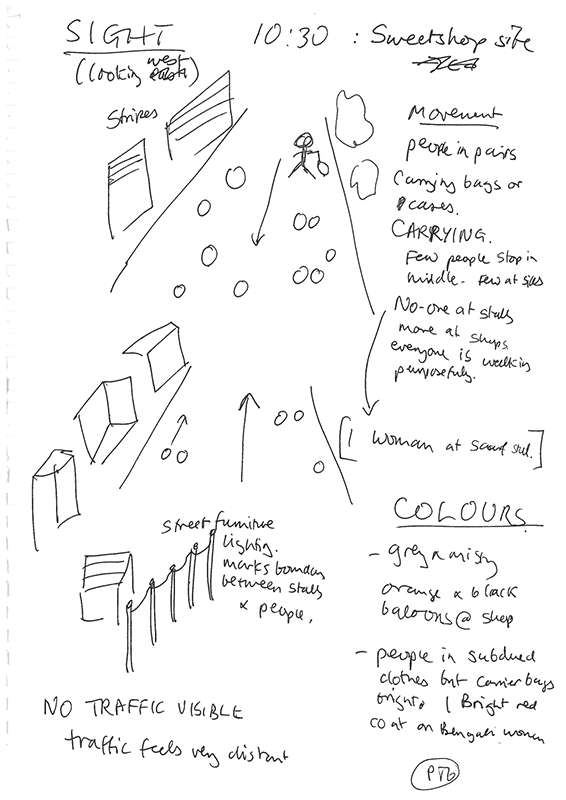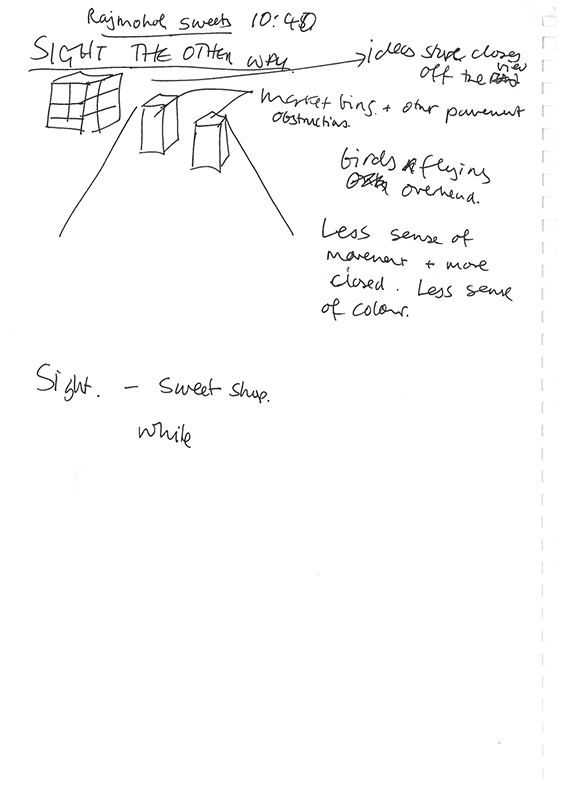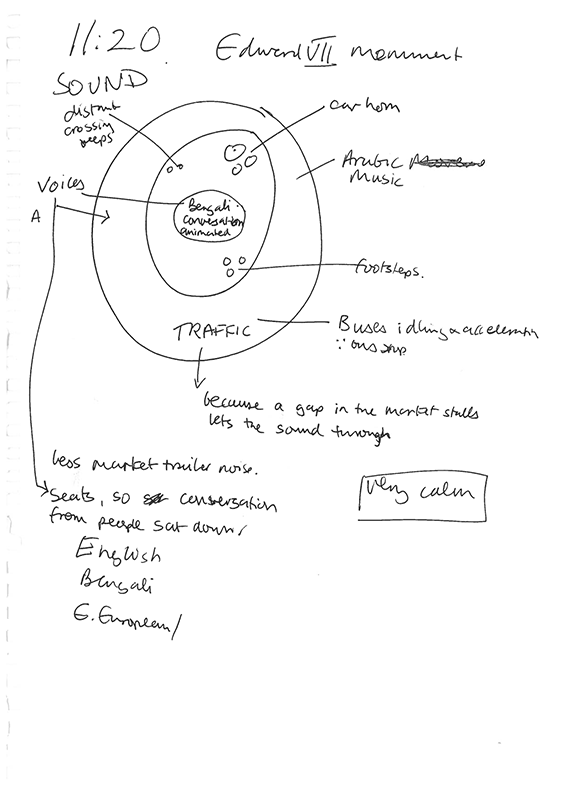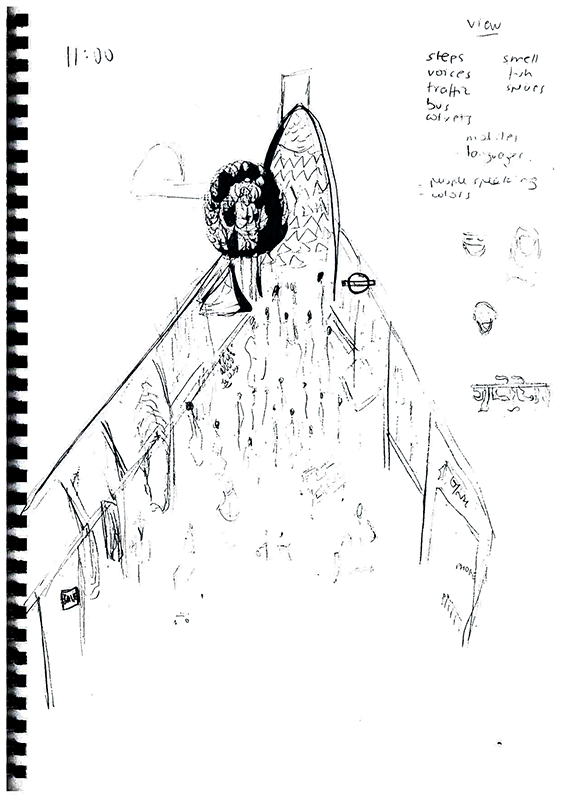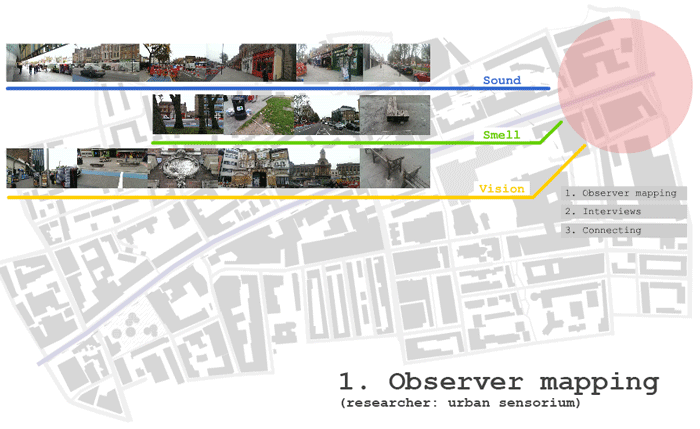Whitechapel Road - London
The workshop focused on urban planning and researching the senses. The first day consisted of a range of presentations that outlined the importance of the senses in the particular professions and disciplines. On the second day a range of inter-disciplinary, cross-professional groups trialled different methods inspired by the discussions.
It is important to note that urban development does not only restructure the city physically and economically but radically transforms the somatic and experiential landscape of places affecting individual’s place attachments. It was therefore strongly felt by participants that a) research on urban sensing is too narrowly discipline based would strongly benefit from a more interdisciplinary and cross-professional approach and dialogue, b) planning and building the city, hence shaping the experience of the urban environment, operates within a complex network of power relations and legal-political constraints. A better understanding of how urban sensory experiences are moulded by these constraints will help to get a more detailed insight of how cities are planned and built.
To see the full report:
Monica Degen, Astrid Swenson & Manuela Barz, AHRC Sensory Cities Network, London Workshop Report, 23-24 October 2016, Museum of London, [http://www.sensorycities.com/workshop/london/report-from-ahrc-sensory-cities-london-workshop/]
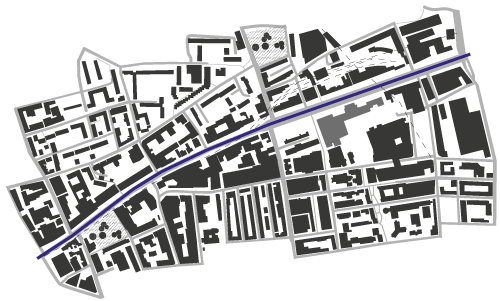
Themes
1. Expertise and the senses:
Participants noted how the professional and academic training individuals receive informs and shapes their ‘sensing’ as well as their methodological approaches to urban experience. Moreover, practitioners and policy makers – i.e those who shape the sensory experience of the city professionally – are under a large number of other constraints such as legal frameworks, time pressures, economic considerations, and powerpolitical constraints that frame how they approach the ‘curating’ of the senses in the public realm. Practitioners felt that while they are aware of the importance of sensory perception in the urban realm, they find it difficult to quantify their impact and would welcome a ‘toolkit’ that would help to create better processes to evaluate the senses in urban experiencing.
Groups and methods
1. Social Media and the making of place:
The first group examined the ways in which people use Instagram/twitter to represent themselves in and in front of buildings. The main questions were: What types of filters are used (and what filters are provided by the particular technology?). What kind of sensory atmosphere is displayed through social media? What are important buildings in social media? How are emotional connections to places represented through people’s photographs? The approach provides a visual-emotional account of a site.

